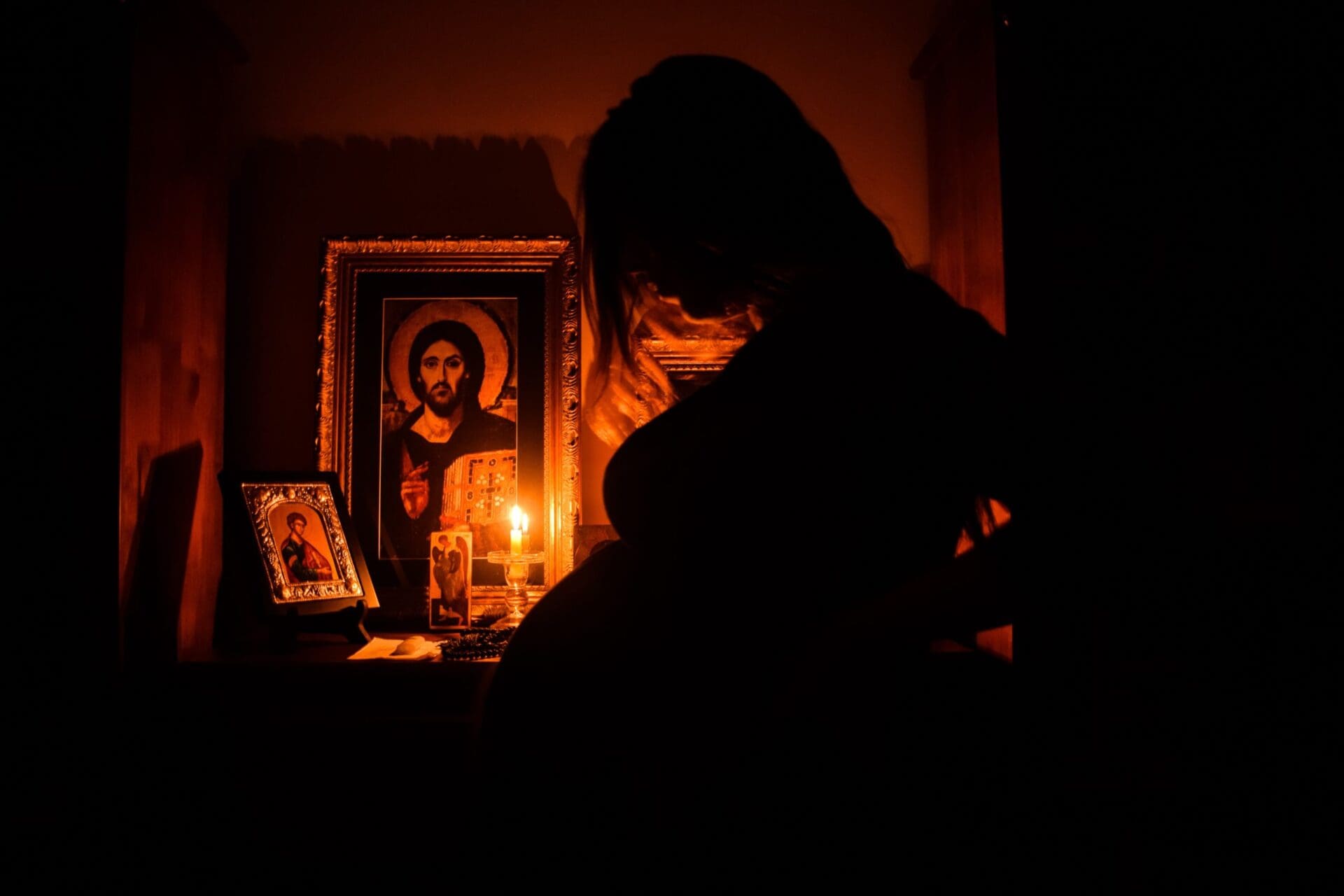If you’ve ever set foot in a beautiful church building, you know the sense of peace, calm, and God’s presence that quickly descends on your soul.
Light filtering through stained glass, ornately carved stone, statuary, and even that faint scent of incense all combine to create a sacred atmosphere. The stresses of the world feel far away, and you can simply rest in God’s presence.
But have you ever longed to bring some of that peace and sacredness into your own home?
If so, you’re not alone, and the good news is, it’s totally possible! Let’s take a look at some ways to create a sacred space in your home.
Defining Sacred Space
The world is a busy place, and most of us spend our lives under rushing here and there or working under the cold glare of fluorescent lights. A sacred space is a sanctuary from this frantic busyness, and properly done, it can help us quiet our hearts and reconnect with the Divine.
But what does sacred even mean? Fundamentally, what is is sacred is that which is set apart for worship. It is something outside of the ordinary, not used for mundane purposes. It is dedicated to God alone.
For example, the shovel you use for digging in your garden is not sacred. The crucifix you hang on your wall to remind you of Christ’s passion and death is sacred.
So applying this idea to your home, a sacred space is an area of your home set apart to help you call to mind God’s presence and to pray. Just like a church building should never be used for a farmer’s market, a sacred space should not be used for anything else. It is a space dedicated to religious practices and devotions, creating an atmosphere conducive to communing with God.
Creating Your Sacred Space
- The first step in creating your sacred space is identifying where in your home it should be kept. Some families prefer a centrally located area like a living room where it is easy for family members to gather around. If you find such a location too distracting, a quiet corner of a home office or bedroom works just as well.Wherever you choose, make sure the space is dedicated to prayer and worship and not other uses. For example, it’s not a great idea for your TV cabinet to double as a home altar.
- Second, choose what you would like to have in your space. Traditionally, Catholic sacred spaces are patterned after the altars we see in our churches. These altars at a minimum include candles, a crucifix, and often, even flowers.These traditional ornaments are beautiful because they include all the elements of nature: air and fire in the candles, and water and earth in the flowers. Pure beeswax candles are often used as well–for pure beeswax traditionally has symbolized purity of soul, and the saints often saw the bee as a symbol of sanctity. The crucifix, of course, reminds of Christ’s redeeming passion and death, which is made present at each Mass.Other ideas for your home altar include a beautiful cloth as a covering, a statue of your patron saint, holy icons or holy cards, and images of Our Lord, the Blessed Mother, or St. Joseph. You can also add a personal touch by including pictures of loved ones, living or deceased, for whom you want to pray. Finally, devotional items like incense, rosaries or prayer books can also be stored on your home altar. Some people even go the extra mile and redecorate their home altars with the different colors of liturgical seasons. But don’t get too caught up in the details. Your space can be as simple or as ornate as you would like to make it. The most important things are that it helps you call to mind God’s presence and that it facilitates prayer.
- Finally, pray! The most important element in your sacred space is your prayers! Use your sacred space daily with love and faith—this is the best way to sanctify it and make it holy. Say your morning offering here, or pray the family rosary together around it. Remember, this space is not about decoration, but rather devotion. Your space can be beautifully decorated or stark and simple. The important thing is that you use it to pray and offer your heart to God.
Conclusion
The philosopher and mathematician, Blaise Pascal, once noted that “All of humanity’s problems stem from man’s inability to sit quietly in a room alone.”
Maybe he was overstating the case, but the point is that we all need to learn to be silent in order to be aware of God’s presence. Filling our days with frantic activity and consumerism is the opposite of a spiritual life.
Creating a sacred space in your home can help you find an oasis of peace in the midst of hectic modern life. It can help you remember and pray to the angels, saints, and above all, God himself. It can help sanctify your home and facilitate personal and family prayer. So if you don’t have a home altar or sacred space yet, why not get started today!















https://websalaryhere24.pages.dev/